| 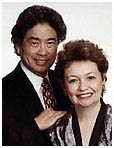 Effective
Teaching...
Effective
Teaching...
by Harry and Rosemary
Wong
September
2006
A 92 Percent
Homework Turn-in Rate
Ready before it happens---that’s
the hallmark of an effective teacher. Barbara De Santis
is one such teacher who is ready before her students walk in the
door each morning. For those students who do not do their
homework, Barbara De Santis has pink slips ready for pick up and
completion.
Chelonnda Seroyer uses pink slips, too, and she has a
high percent homework turn in rate.
Both of these effective teachers and their procedures have been
featured in past teachers.net columns. Barbara De Santis
shared her first day of school script in “Effective
Teachers Are Proactive.” Chelonnda Seroyer validates
“The
Power of Procedures” in the February 2005 column.
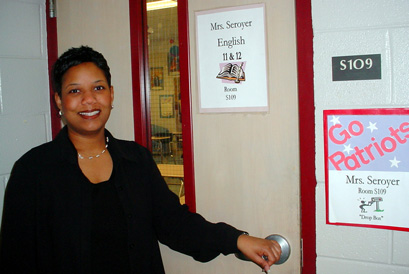
Barbara and Chelonnda use the pink slip technique to give students
an opportunity to explain why they chose not to do their homework.
In their classrooms, students are not allowed to sit
passively and not turn in their homework. They
are required to take responsibility for their actions by completing
a pink slip when homework is not turned in. The students
are warned of this procedure on the first day of school.
Click here to see the pink
slip.
The students are told that there is no penalty for filling one
out other than the loss of credit for their homework assignment.
However, they always ask, "What happens after we get so many?"
or "What are you going to DO to us if we get one?"
Chelonnda tells her students that she will not be DOING anything
to them. It is simply a procedure that allows them to offer
an explanation and allows her to document why they do not have
their homework.
She does tell them that she will show the pink slip to
their parents and the administration, if necessary, during conferences
about their performance in her class. She gets
affirmation that they understand the procedure and moves on.
Origin of the Pink Slip
Barbara De Santis learned of the pink slip technique when she
heard Chelonnda Seroyer speak at a meeting. Chelonnda, in
turn, said she “stole” the technique from a fellow
teacher, Karla Hensen, at Liberty Middle School in Madison, Alabama.
The original form was called the "Personal Responsibility
Card." It was a 3½ x 5 inch card and it had
the same information that the pink slip has.
However, Chelonnda found that the card was difficult to file and
it did not stack neatly with the other homework papers.
So, with a good friend, Grindl Weldon at Locust Fork High School
in Blount County, Alabama, they resolved to revise it.
Someone had given Chelonnda a pack of pink paper (“Teachers
will accept anything!” she says.) and she didn't know what
to do with it. So, instead of wasting it, they opted to
reprint the information from the "Personal Responsibility
Card" and put it on the "Pink Slip."
It worked wonderfully because it was an 8½ by 11 inch
piece of paper that was easily distinguished from the rest of
the stack. This made it easier to sort and file immediately.
Chelonnda’s Pink Slip Experience
Although the students are fully aware that she will use the pink
slip during conferences, Chelonnda says that she is often amazed
by what they will write down.
One student said that he did not do his homework because his
grandmother
died and he had to go to her funeral.
Shortly after that, the administration orchestrated a conference
concerning this student's poor academic progress. Guess
who showed up at the conference . . . the grandmother!
Another student wrote,
"I was at home and I sat down to do my work and then I
realized that I didn't have a pen or a pencil. So, after
looking for a total of 15 seconds, I chose not to do my work
then, but I would get to it later. I lied. I didn't
do it at all because I forgot. THE END."
Shortly thereafter, his father called to inquire about the zero
that his son received on this assignment. Chelonnda read
his son’s statement to him and there was absolute silence
on the other end of the phone! He quickly thanked
her for her time and said that he would have a talk with his son!
Chelonnda and Harry regularly present their classroom management
techniques to the teachers of the Miami/Dade County Schools.
At one of these sessions, a teacher shared that he had been using
the pink slip. He had a HORRIBLE time with students not
turning in their work. He used the pink slip. He said
that the first week he used an entire ream of paper. The
next ream lasted him the rest of the school year! His
homework turn in rate improved drastically!
At a similar type of session in New Jersey, a principal said that
he asked his teachers to use the pink slip. He said that
their homework turn in rate increased from 45 percent to 85 percent!!
Chelonnda says that she currently has
a 92 percent homework turn in rate.
And, it gets better each year!
Barbara’s Pink Slip Experience
Barbara De Santis shares how she has used the
pink slip:
- It provides excellent documentation at parent teacher conferences.
When the parent swears the child has completed the assignment,
the pink slip is produced in the child’s handwriting.
End of discussion.
- They are great resources when writing progress reports. Information
from the pink slips can be sent home every week for parental
review and signature, if needed.
- In her class, she uses them to withhold reward activities.
Excessive pink slips means the student cannot go to a special
program or cannot participate in a class activity.
Barbara started to use the pink slips last school year and has
shared that she plans to spend time this year analyzing its efficacy
during the school year. She says that she wants to see if
she can identify any recurring problems. She plans on involving
the students in the analysis of the problems and have them make
recommendations for improvement and success.
Before you use the pink slip as a threatening devise,
do as Barbara De Santis plans to do this year.
Analyze the problem. It may well be how the homework assignments
are being assigned.
How to Improve the Homework Turn-in Rate
- Wait until the second or third week of school to assign
homework that is to be done at home. During the
first week or two of school, assign homework, but do it in class.
Teach the students the procedure of how to do the homework.
When you have assessed the student’s ability to do the
homework correctly, then assign homework to go home.
- Start the homework in class and then send
the students home to finish the homework is a variation to use
when you sense students may have a difficult time with the assignment.
- Tell the students what the homework is and
what the purpose is of the homework. The homework must
be correlated to the objectives of the lesson. If not,
the students will ask why they have to do the homework.
The students will suspect (as well as the parents) that the
assignment is just busy work masquerading as “homework.”
- Make the homework consistent in style and
clear in purpose. A consistent style also helps to reinforce
the routine of completing the assignment. This is the
same as routines that must be done in life such as washing the
dishes, calling an elderly parent, or picking up the kids, but
if there is a routine, it makes the task that much easier to
complete.
- Give homework that is a positive, enriching experience.
It should be an opportunity to reinforce the day’s learning.
- Indicate the probable length of time for completion
somewhere on the homework assignment. Just as you like
to know the length of a song on a CD or the length of a movie
on a DVD or at a theater, you can improve homework completion
rate if the students know the time it will take to do an assignment.
Bear in mind that some students are shuttled between parents
or caregivers. Others have parents or siblings to take care
of or have a part-time job, so you can help them to schedule
their time by indicating the length of the assignment.
-
Do the first few homework assignments yourself.
Ask yourself the important question: If I were the student,
could I complete the assignment in a reasonable amount of
time, with success, and what will I have learned or have reinforced
from having competed the homework assignment?
Procedures for Orchestrating Homework
Dedicate a place in the classroom to post assignments.
This can probably be the same place where the daily schedule is
posted.
As soon as the students come into the classroom, have them place
their homework in a designated spot on their desk (a procedure)
and begin their bellwork assignment.
While they are working, work the class—visiting with each
student, asking about their homework, maybe even their life.
Daily contact right at the beginning is an easy, but meaningful
way to build a relationship.
Homework must be corrected. If they see that homework is
assigned, but not looked at, they will logically stop doing the
homework, even with the best of students.
The purpose of homework is to reinforce or provide more
practice for the class objective and lesson. You
don’t grade practice, so don’t let homework become
too much a part of the student’s grade, if at all.
Check the homework for completion or correctness, initial or
stamp it, and note the completion in your grade-record book.
The students want and appreciate the immediate feedback.
Bear in mind that certain students have parents who help their
children with their homework, provide a designated study place,
and even have procedures at home for where and when homework should
be done. These students obviously have an advantage over
the students who do not have these, which is not their fault.
Help the students to organize their homework.
This also helps the parents to organize helping their child.
To do this, perhaps you can have a permanent HOMEWORK FOLDER provided
for each student. The homework goes home nightly in the
folder and is returned the next day in the folder. The homework
or the folder is placed in the designated place on the desk.
For those students who may be homeless, have parents who are
barely making ends meet, or have no place to study, place a sheet
or two of binder paper in the folder. It would even be nice
if an occasional phrase were written, heart were drawn in the
corner, or a “thank you” written in the bottom corner.
Make use of a school or district homework hotline, if one is
available. If students are absent a procedure is for them
to check the hotline for the current homework assignment.
For younger children, have a place for the parents to initial
that they have seen the homework folder. This way the student
cannot claim that there is “no homework.”
Before you assign homework, check your school’s
policy about homework. It may be highly prescribed
as to what you are to do and not to do.
Some students may need weekly, rather than nightly homework.
This may be better for gifted and more mature students.
Some students may be very active in school or have outside of
school activities and will appreciate this flexibility.
The most effective time to assign homework is during the lesson;
otherwise it has no relevance to the student. The other
effective time is at the end of the lesson when the homework can
bring summary to what has been learned and provide transition
to the next lesson.
Effective Teachers Share Their Success
Effective teachers never cease to learn – especially
from each other.
You’ve just read how a simple technique observed by one
teacher got enhanced and then “stolen” by another.
What it really is is collaboration. Effective teachers sharing
what works with others.
In high performing schools, teachers who take
a collegial approach to decision making and are willing to share
with one another produce students who reach high academic standards.
It’s quite obvious that classrooms where homework turn
in increases from 45 to 85 percent are producing students that
are achieving more. And this is with one simple technique
– a pink slip.
Imagine the achievement levels of students if we opened our classroom
doors, our file cabinets, our boxes of techniques and shared with
each others. We thank those who have done just that with
us, shared with us what has worked for them, so we can share it
with others. You are truly helping to elevate the profession
and increase student achievement.
Call it sharing; call it stealing; call it research;
call it collaboration, call it collegial learning.
It’s an endeavor we all must practice. No one school
or individual has all the answers. And no one answer fits
every question. It’s a process one goes through to
find what works best. Our ears, eyes, and mind must always
be alert for what others are doing and how it is working for them.
Make a commitment this school year to share with a colleague,
the staff, in a professional journal, at a workshop, with us what
is working for you and how your students benefit from it.
You will become a member of a much larger profession and grow
greatly in the process. And the real winners will be the
kids for you’ll bring to the classroom new insights, greater
depth of understanding, and an endowment for their success.
We depend on each other for the creative solutions to our problems
and the inspiration to find solutions for those we serve—our
students.
The effective teacher never ceases to
learn.
Make September a month for Sharing.
 For a printable version of this article click
here.
For a printable version of this article click
here.
Harry & Rosemary Wong products: http://www.harrywong.com/product/
Email Harry Wong: harrywong@teachers.net
Gazette Articles by Harry & Rosemary Wong:
If you spot a link that appears to be out-of-date, please alert us at webmaster@teachers.net!
- A Grateful Goodbye After 15 Years (Jun 2015)
- Love, Marriage, and Babies, Oh My! (May 2015)
- Retention Rate Is 100 Percent (Apr 2015)
- Teacher Effectiveness and Human Capital (Mar 2015)
- Training Teachers to Be Effective (Feb 2015)
- Making Deals Is Ineffective (Dec 2014 / Jan 2015)
- Retrieving and Carrying Electronic Devices (Nov 2014)
- Sharing to Succeed (Oct 2014)
- How a University Prepares Its Students (Sep 2014)
- Effective Teaching (Aug 2014)
- Your Future Is in Your Hands (June/July 2014)
- The Classroom Management Book (May 2014)
- When Students Succeed; Teachers Succeed (April 2014)
- Teaching New Teachers How to Succeed (March 2014)
- Execute and Praise (February 2014)
- Shaping a Solid Foundation (Dec 2013 / Jan 2014)
- The Most Misunderstood Word (November 2013)
- How to Start Class Every Day (October 2013)
- Prevention: The Key to Solving Discipline Problems (September 2013)
- Planning, Planning, Planning (August 2013)
- Are You THE One? (June / July 2013)
- Practical Examples That Work (May 2013)
- A Disability Is Not a Handicap (Apr 2013)
- Totally Inexcusable (Mar 2013)
- Be Proud of Public Education (Feb 2013)
- Structure Will Motivate Students (Dec 2012 / Jan2013)
- Orchestrating the Classroom (Nov 2012)
- The Lasting Impact of Instructional Coaching (Oct 2012)
- Learning, Laughing, and Leaving a Legacy (Sep 2012)
- Twenty-two, First Year, and Legit (Aug 2012)
- A Master Teacher of Teachers (June/July 2012)
- Where Going to School Means Success (May 2012)
- A Nationally Celebrated High School (Apr 2012)
- The Highest Rated School in New York City, Part 2 (Mar 2012)
- The Highest Rated School in New York City, Part 1 (Feb 2012)
- The Importance of Culture (Dec 2011 / Jan 2012)
- You Can Teach Classroom Management (Nov 2011)
- Seamless, Transparent, and Consistent (Oct 2011)
- Coaching Teachers to Be Effective Instructors (Sep 2011)
- How a Principal Creates a Culture of Consistency (Aug 2011)
- Graduation Begins in Your Classroom (June/July 2011)
- The Inspiration of a Mother (May 2011)
- How to Be an Effective Leader (Apr 2011)
- Learning Objectives: The Heart of Every Lesson (Mar 2011)
- Even Shakespeare Had Structure (Feb 2011)
- Effectiveness Defined: It's Not a Mystery (Dec 2010 / Jan 2011)
- Surviving Without a Principal (Nov 2010)
- Achieving Greatness: Locke Elementary School, Part 2 (Oct 2010)
- Teaching Greatness: Locke Elementary School, Part 1 (Sep 2010)
- Effective from the Start (Aug 2010)
- Ten Year Summary of Articles, 2000 to 2010 (June/July 2010)
- The Success of a Culture of Consistency (May 2010)
- Training Teachers to Be Effective (Apr 2010)
- Learning to Teach, Teaching to Learn (Mar 2010)
- Turning Teaching Dreams into Reality (Feb 2010)
- Dreams and Wishes Can Come True (Dec 2009 / Jan 2010)
- Success in a State Controlled School (Nov 2009)
- Inner City Is Not An Excuse (Oct 2009)
- Exceeding All Expectations (Sep 2009)
- Teachers Are the Difference (Aug 2009)
- Nine Year Summary of Articles, 2000 to 2009 (Jun/Jul 2009)
- Teachers Are the Greatest Assets (May 2009)
- The Tools for Success (Apr 2009)
- Assessing for Student Learning (Mar 2009)
- To Be an Effective Teacher Simply Copy and Paste (Feb 2009)
- The Sounds of Students Learning and Performing (Dec 2008)
- A School That Achieves Greatness (Nov 2008)
- Boaz City Schools: Professional Learning Teams (Oct 2008)
- It Was Something Close to a Miracle (Sep 2008)
- A Computer Teacher Shows the Way (Aug 2008)
- Eight Year Summary of Articles, 2000 to 2008 (Jun/Jul 2008)
- An Amazing Kindergarten Teacher (May 2008)
- Schools That Beat the Academic Odds (Apr 2008)
- Academic Coaching Produces More Effective Teachers (Mar 2008)
- Coaches Are More Effective than Mentors (Feb 2008)
- Wrapping the Year with Rap! (Dec 2007/Jan 2008)
- The Floating Teacher (Nov 2007)
- Taking the Bite Out of Assessment—Using Scoring Guides (Oct 2007)
- Ten Timely Tools for Success on the First Days of School (Sep 2007)
- First Day of School Script - in Spanish, Too! (Aug 2007)
- Seven Year Summary of Articles, 2000 to 2007 (Jun 2007)
- Effective Teachers End the Year Successfully (May 2007)
- Training Gen Y Teachers for Maximum Effectiveness (Apr 2007)
- Classroom Management Applies to All Teachers (Mar 2007)
- Students Want a Sense of Direction (Feb 2007)
- Rubrics in Two College Classes (Dec 2006/Jan 2007)
- How to Write a Rubric (Nov 2006)
- Assessing Student Progress with a Rubric (Oct 2006)
- A 92 Percent Homework Turn-in Rate (Sep 2006)
- Effective Teachers Are Proactive (Aug 2006)
- Five Year Summary of Articles (Jun 2006)
- Hitting the Bulls Eye as a Beginning Teacher (May 2006)
- They're Eager to Do the Assignments (Apr 2006)
- The Success of Special Ed Teachers (Mar 2006)
- What Teachers Have Accomplished (Feb 2006)
- Fifty Years Ago, The Legacy (Dec 2005/Jan 2006)
- The Emergency Teacher (Nov 2005)
- Classroom Management Is Not Discipline (Oct 2005)
- A Successful First Day Is No Secret (Sep 2005)
- The Most Important Factor (Aug 2005)
- Four Year Summary of Articles (Jul 2005)
- Improving Student Achievement Is Very Simple (Part 2) (Jun 2005)
- Improving Student Achievement Is Very Simple (Part 1) (May 2005)
- Never Cease to Learn (Apr 2005)
- His Classroom Is a Real Life Office (Mar 2005)
- The Power of Procedures (Feb 2005)
- The First Ten Days of School (Jan 2005)
- PowerPoint Procedures (Nov/Dec 2004)
- The Saints of Education (Oct 2004)
- How Procedures Saved a Teacher's Life (Sep 2004)
- How to Help Students with Their Assignments (Aug 2004)
- Three Year Summary of Articles (Jun/Jul 2004)
- His Students are All Certified (May 2004)
- What to Do When They Complain (Apr 2004)
- A Well-Oiled Learning Machine (Mar 2004)
- The Effective Teacher Adapts (Feb 2004)
- How to Start a Lesson Plan (Aug 2003)
- Applying for a Teaching Job in a Tight Market - Part 2 (Jun/Jul 2003)
- Applying for a Teaching Job in a Tight Market (May 2003)
- The Effective Substitute Teacher (Apr 2003)
- A First Day of School Script (Mar 2003)
- How to Retain New Teachers (Feb 2003)
- No Problem With Hurricane Lili (Dec 2002)
- A Class Size of 500 (Nov 2002)
- Effective Practices Apply to All Teachers (Oct 2002)
- Dispensing Materials in Fifteen Seconds (Sept 2002)
- How To Start School Successfully (Aug 2002)
- Teaching Procedures Is Teaching Expectations (June - July 2002)
- $50,000 to Replace Each Teacher (May 2002)
- Even Superintendents Do It (Apr 2002)
- Impossible, No Job Openings? (Mar 2002)
- A Stress Free Teacher (Feb 2002)
- A Most Effective School (Jan 2002)
- Van Gogh in Nine Hours (Dec 2001)
- The Effective Teacher Thinks (Nov 2001)
- How a Good University Can Help You (Sep 2001)
- How to Motivate Your Students (May 2001)
- How to Recognize Where You Want to Be (Apr 2001)
- What Successful New Teachers Are Taught (Mar 2001)
- A Journey of the Heart (Feb 2001)
- The Miracle of Teachers (Jan 2001)
- It's Not the Students. It's the Teacher. (Dec 2000)
- The First Five Minutes Are Critical (Nov 2000)
- How to Start a Class Effectively (Oct 2000)
- The Problem Is Not Discipline (Sep 2000)
- There Is Only One First Day of School (Aug 2000)
- Applying for Your First Job (Jul 2000)
- Your First Day (Jun 2000)
Browse through the latest posts from the Classroom Management
Chatboard...
|





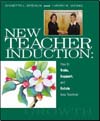



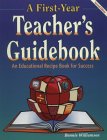
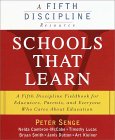

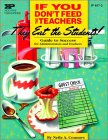
 Effective
Teaching...
Effective
Teaching... 